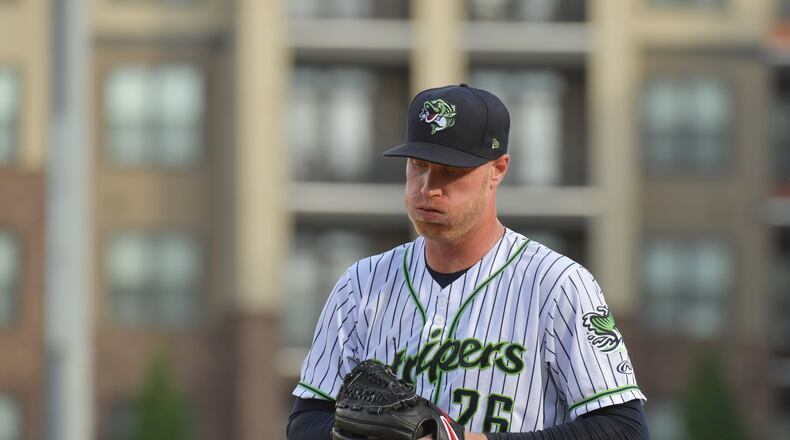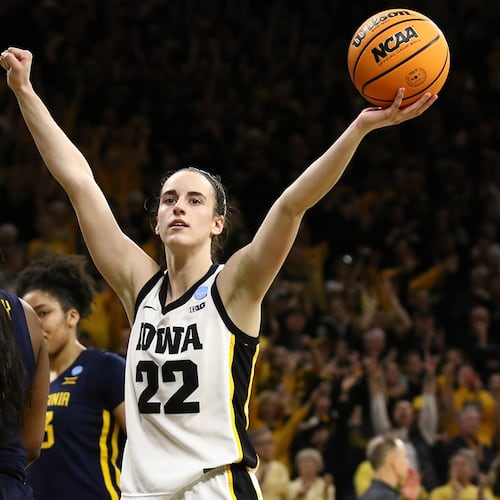Way back in March, Bryse Wilson started against the Phillies in the season’s second game. On the eve of the Fourth of July, Wilson started again, also against the Phillies. His Game 2 assignment came because 60 percent of the Braves’ projected 2019 rotation began the season on the injured list. His appearance in Game 87 came because 60 percent of the same projected rotation has been injured, demoted or repurposed.
A team that rebuilt itself around young pitching has again turned to a young pitcher who wasn’t deemed a top-tier prospect. Wilson was a fourth-round pick in 2016, not a first-rounder like Touki Toussaint was for Arizona or Kolby Allard, Mike Soroka, Ian Anderson and Kyle Wright were here. But he’s making starts, albeit well-spaced ones, and Sean Newcomb’s in the bullpen and Mike Foltynewicz is in Triple-A.
If you’re looking for a nit to pick about these Braves – and really, this is way more than a nit – it’s the starting pitching. The once-bedraggled bullpen has stabilized. The everyday eight is among baseball’s best. This rotation has had moments, but that’s all it has had. Scary stat of the year: This rotation’s ERA is 4.59; last year’s was 3.50. We stipulate that the National League average ERA for starters is up 0.50 year over year; we also note that the Braves’ is up more than twice that much.
Let me be clear: I’m not hedging on my longstanding prediction. I still believe the Braves will win the NL East. (They led by 4-1/2 games as of Wednesday afternoon.) But I also pay attention to stats, and I like to believe I have some small grasp of history. The Braves were 2018 division champs in large measure because their rotation posted the league’s second-best ERA; the 2019 club is in first place despite its rotation, which ranks 11th.
Let me also be clear: I didn’t expect this, not from an organization a-brim with young arms. The Braves didn’t expect it, either. But here we, and they, are. The historian in me knows that those 14 consecutive first-place finishes largely were a function of the Braves’ rotations, some of which might have been the best ever assembled. Nobody figured this year’s crew would outdo Maddux, Glavine, Smoltz, Avery and Mercker. That said, nobody figured it would outdo only four of the NL’s 14 other staffs.
Asked before Wednesday’s game if he’s surprised at the statistical underperformance of his rotation, Braves manager Brian Snitker said: “Probably a little bit.” Asked if he was surprised at still being in first place with such starting pitching, he said: “I don’t know that it’s surprising. I don’t feel like that. I know we got beat up a little bit before the rotation got settled in. Before we had that run (in June), we had a lot of shorter starts.
Then: “We’re winning games. Consequently, I like the starting pitching. Would I like for us to go a little bit deeper into games more consistently? Absolutely, because I worry about the longevity of the bullpen. I think (the relievers) have done a great job, and we’ve done a really good job of spacing them out and not wearing anybody down. If your starting pitching is pitching the majority of your innings, it’s probably going to be good for you.”
The Braves rank 10th among NL clubs in innings worked by starting pitchers. Of the five rotations below them, four work for sub-.500 teams. (The exception is Milwaukee, which takes a volume approach to the concept of starting pitching.) As much as we’ve ripped this bullpen, it’s only fair to wonder how much better these relievers would have fared given a lighter load.
The obvious difference between last season’s Braves and the current crew is Foltynewicz, or the absence thereof. He worked 189 big-league innings in 2018 and started Games 1 and 4 of the NLDS. He logged 59-1/3 this season before he was shipped to Gwinnett to figure out where his slider went. Kevin Gausman arrived at the trade deadline and made five excellent August starts – his ERA was 1.69; the Braves went 4-1 with him working – that helped turned the division race into a runaway. He’s out with plantar fasciitis; his ERA over 62-1/3 innings was 6.21.
Julio Teheran has been a bit better than last season, but he has averaged only 5.3 innings per start, down from 5.67. Mike Soroka has been great and Max Fried quite good, but this is the first time they’ve held spots in a big-league rotation. There’s no guarantee they’ll be as strong in August as they were in April or May. That leaves Dallas Keuchel, whose third start – he yielded two runs over seven innings against the Phillies on Tuesday – was rather promising.
Snitker: “There’s a couple of younger guys we’ve tried not to pitch too deep, and Dallas is going to help that situation.”
He should. But let’s get way ahead of ourselves and look beyond August and September. Of this rotation, who would start in an October best-of-five/seven? Soroka, providing he holds up. Keuchel, because that’s why he’s here. Then who? Fried, who made last year’s postseason roster as a reliever? Teheran, who wasn’t trusted to throw a playoff pitch until the Braves trailed in the seventh inning of the eliminating Game 4? Gausman? Wilson? Newcomb? Toussaint?
Back to Foltynewicz: He's not here, but he remains a key man in the big-league team's immediate future. In his first Triple-A start since being shipped out, he worked 7-2/3 innings and yielded two earned runs. He struck out eight, walking one. "A great step," he called it, and maybe it was.
The only way the Braves won’t play in October if a rickety rotation collapses. To preclude such a calamity, Foltynewicz needs to find himself. Or Alex Anthopoulos needs to persuade Texas to part with Mike Minor – the ex-Brave has been one of MLB’s five best pitchers this season – before the month’s out.
About the Author
The Latest
Featured



